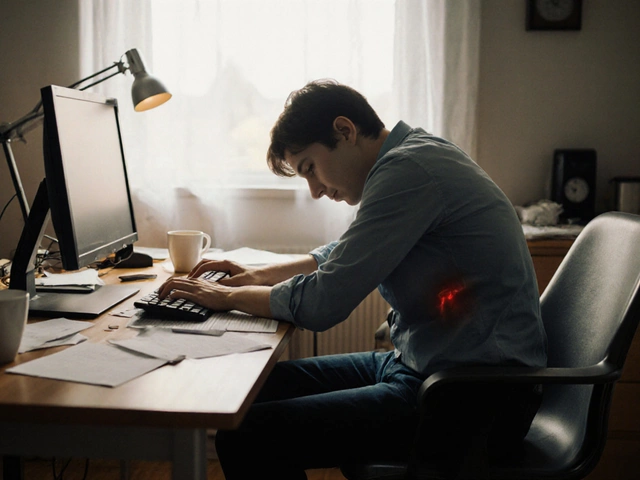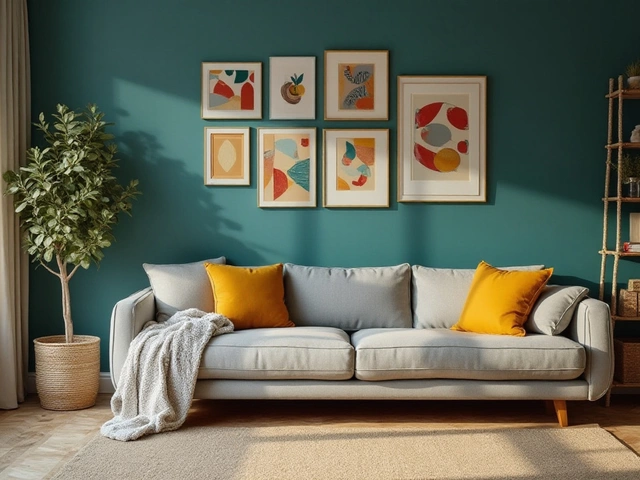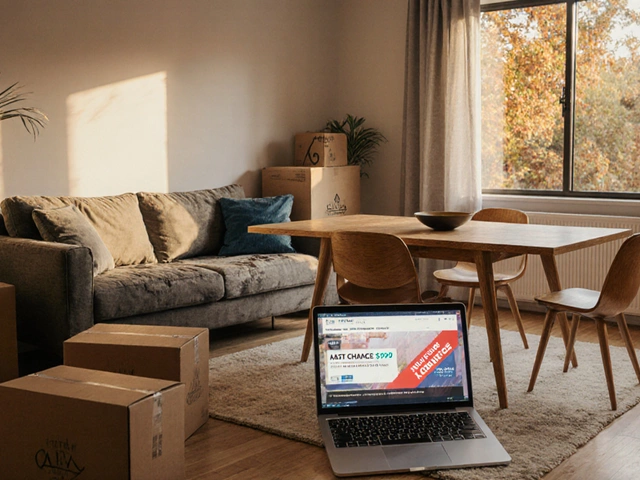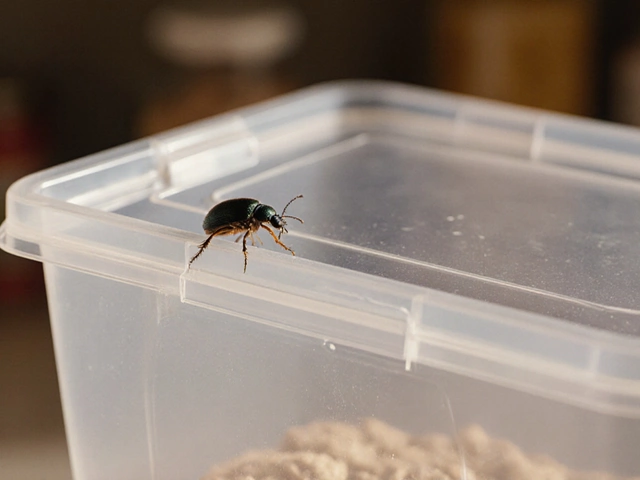 14
Nov,2025
14
Nov,2025
Ceiling Height Bookcase Calculator
Enter your room details to get recommendations
When you’re planning a built-in bookcase, one of the biggest decisions isn’t about wood type or color-it’s whether to take it all the way to the ceiling. It sounds like a simple choice, but it affects everything: how much storage you get, how clean your space looks, how easy it is to clean, and even how safe your home feels.
Why Going to the Ceiling Makes Sense
Most people think of bookcases as furniture you place in a corner. But when you build one into the wall, you’re not just adding shelves-you’re turning unused vertical space into functional real estate. In a typical Australian home, ceilings are 2.4 to 2.7 meters high. That’s over half a meter of wasted space above standard 1.8-meter bookshelves.
Going ceiling-to-floor maximizes storage. You can fit 30-50% more books, binders, display items, or decorative objects without taking up floor space. In small apartments in Melbourne or Sydney, this extra vertical capacity can mean the difference between a cluttered living room and a tidy one.
Architects and interior designers in Melbourne have been using full-height built-ins since the 1980s. The trend isn’t new-but it’s becoming more popular because modern homes are smaller and homeowners want smarter storage. A 2024 survey by the Australian Institute of Building Surveyors found that 68% of new home renovations included ceiling-height cabinetry in living areas, mostly for books and media.
The Visual Impact: Tall and Imposing-or Elegant and Seamless?
A bookcase that reaches the ceiling creates a strong visual anchor. It draws the eye upward, making a room feel taller and more spacious. That’s why luxury homes in Hawthorn or Carlton often use full-height bookcases to add gravitas to formal living areas.
But there’s a catch: if the design isn’t balanced, it can feel heavy or oppressive. That’s why most professionals pair ceiling-height bookcases with open shelving at the top. Instead of packing every shelf full, leave the upper two or three shelves lightly styled-maybe with a few plants, a ceramic vase, or framed art. This breaks the visual weight and keeps the space from feeling like a library vault.
Contrast that with a bookcase that stops a foot below the ceiling. The gap creates a visual break, but it also becomes a dust trap. In Melbourne’s humid summers and dry winters, that gap collects lint, pet hair, and pollen. Cleaning it means pulling out a ladder every few months. A ceiling-height unit? You wipe it once a year with a microfiber duster.
Practical Downsides: What You Might Regret
It’s not all upside. Going to the ceiling means you can’t reach the top shelves without a step stool or ladder. That’s fine if you’re storing seasonal items or rarely used books-but if you’re putting your favorite novels or daily reference books up there, you’ll end up frustrated.
Also, safety becomes a concern if you have kids or elderly family members. A heavy bookcase that reaches the ceiling needs to be securely anchored to wall studs. In earthquake-prone areas like parts of New Zealand and eastern Australia, building codes now require full-height cabinetry to be fastened with anti-tip brackets. Skip this step, and you risk a serious accident.
Then there’s cost. A custom ceiling-height bookcase made from solid oak or engineered timber can cost between $3,500 and $8,000 in Melbourne, depending on complexity. That’s 2-3 times more than a standard 1.8-meter unit. You’re paying for extra materials, labor, and structural reinforcement.

When to Skip the Ceiling
Not every space needs to go all the way up. If your room has low ceilings-under 2.4 meters-going ceiling-high can make it feel cramped. In older Melbourne homes with 2.3-meter ceilings, a bookcase that ends 15-20 cm below the ceiling often looks more proportional.
Also, if your bookcase is in a hallway, entryway, or narrow room, a full-height unit can dominate the space and block natural light. In those cases, a mid-height design (around 2 meters) with open shelving above lets light flow through.
And if you’re renting? Don’t build anything that goes to the ceiling. Landlords hate permanent fixtures. Stick with freestanding units or wall-mounted shelves that can be removed without damage.
Smart Design Tips for Ceiling-Height Bookcases
If you’re going for the full height, here’s how to get it right:
- Leave the top 2 shelves light-use them for decor, not storage. This creates breathing room visually.
- Install lighting-LED strips along the top or bottom of the unit add warmth and make it easier to find books at night.
- Use consistent shelf spacing-if you’re storing mostly paperbacks, 25 cm is fine. For hardcovers or albums, go 30 cm. Don’t mix spacing randomly; it looks messy.
- Anchor it to the wall-use 2-3 heavy-duty brackets connected to wall studs. Don’t rely on drywall anchors alone.
- Match the trim-if your room has crown molding, extend the bookcase’s top panel to meet it. This hides the joint and makes it look custom-built.

Alternatives to Full-Height Bookcases
You don’t have to choose between a short shelf and a ceiling-high wall. Here are two smart compromises:
- Bookcase with a cabinet top-go full height but close the top section with doors. Store seasonal items, electronics, or fragile collectibles inside. It looks clean and hides clutter.
- Double-tiered design-install two separate units: one 1.8 meters tall at floor level, and a narrower 60-cm-high shelf above it. This gives you storage at both levels without the risk of over-height.
These options give you the benefits of vertical storage without the hassle of climbing ladders or spending $7,000.
Final Decision: Is It Right for You?
Ask yourself these three questions:
- Do you have enough books or collectibles to fill a full-height unit? If you own fewer than 100 books, you’re better off with a mid-height shelf.
- Can you safely reach the top shelves? If you’re over 65 or have kids under 10, think twice.
- Is the room big enough to handle the visual weight? In a small bedroom or narrow hallway, a ceiling-height unit can feel overwhelming.
If you answered yes to all three, go for it. A ceiling-height built-in bookcase is one of the most practical, stylish upgrades you can make to your home. It’s not just storage-it’s architecture.
But if any answer is no? Stick with a 2-meter unit. You’ll save money, reduce risk, and still get great storage. There’s no shame in stopping short.
Do ceiling-height bookcases make a room feel smaller?
Not if they’re designed well. A full-height bookcase actually makes a room feel taller by drawing the eye upward. The key is to avoid overcrowding the top shelves. Leave them light with a few decorative items, and use consistent lighting to create depth. In rooms with low ceilings, a gap of 15-20 cm below the ceiling can help avoid a claustrophobic feel.
Can I install a ceiling-height bookcase myself?
Only if you have advanced carpentry skills and access to wall studs. Most ceiling-height bookcases require precise cutting, anchoring into load-bearing walls, and leveling across the full height. In older homes, walls may not be straight, making alignment difficult. Most professionals recommend hiring a joiner or cabinetmaker, especially if you’re using solid timber. DIY kits exist, but they rarely work well for full-height installations.
How much does a custom ceiling-height bookcase cost in Australia?
In Melbourne, a custom-built ceiling-height bookcase made from engineered timber or oak costs between $3,500 and $8,000. Factors that affect price include wood type, number of shelves, lighting, trim details, and whether it’s floor-to-ceiling with doors or open shelving. Basic units with MDF and no lighting start around $2,500, but they won’t last as long or look as premium.
Should I paint my ceiling-height bookcase the same color as the wall?
Yes-if you want it to feel like part of the architecture. Painting the bookcase the same color as the wall (or slightly lighter) helps it blend in and reduces visual clutter. Darker colors make it feel more dramatic, but they can also make the space feel smaller. White, cream, or soft gray are popular choices in Australian homes for a clean, modern look.
Do ceiling-height bookcases increase home value?
Yes, especially in urban areas like Melbourne, Sydney, or Brisbane. Buyers in high-density suburbs look for smart storage solutions. A well-designed, full-height built-in bookcase signals quality craftsmanship and thoughtful design. Real estate agents report these features can add 3-5% to perceived home value, particularly in renovated apartments or older homes being modernized.




